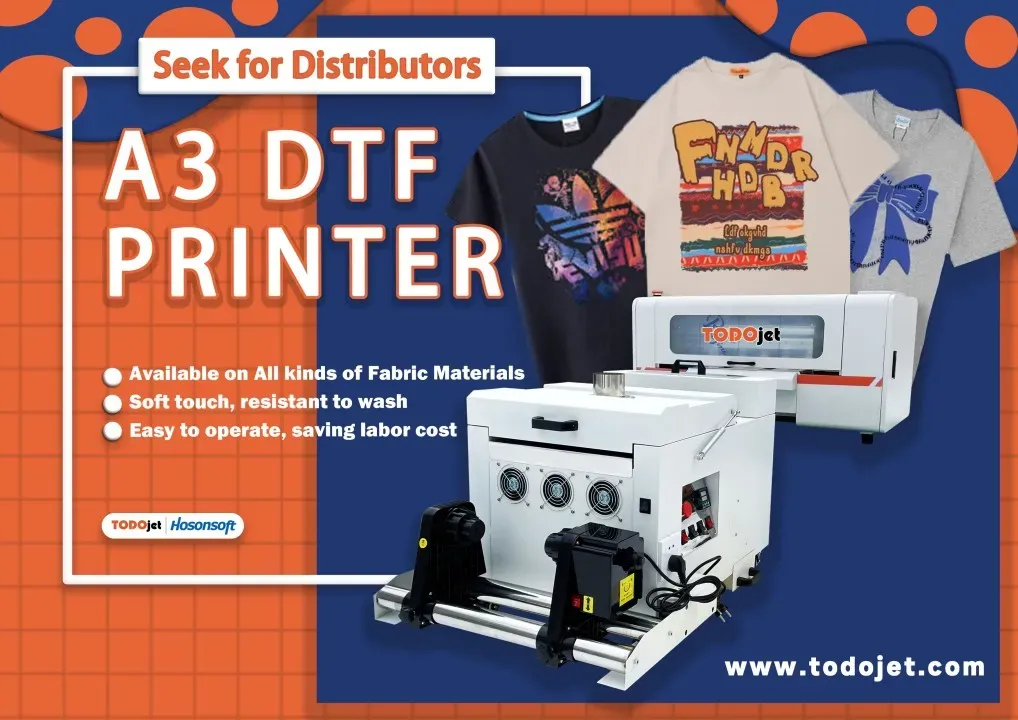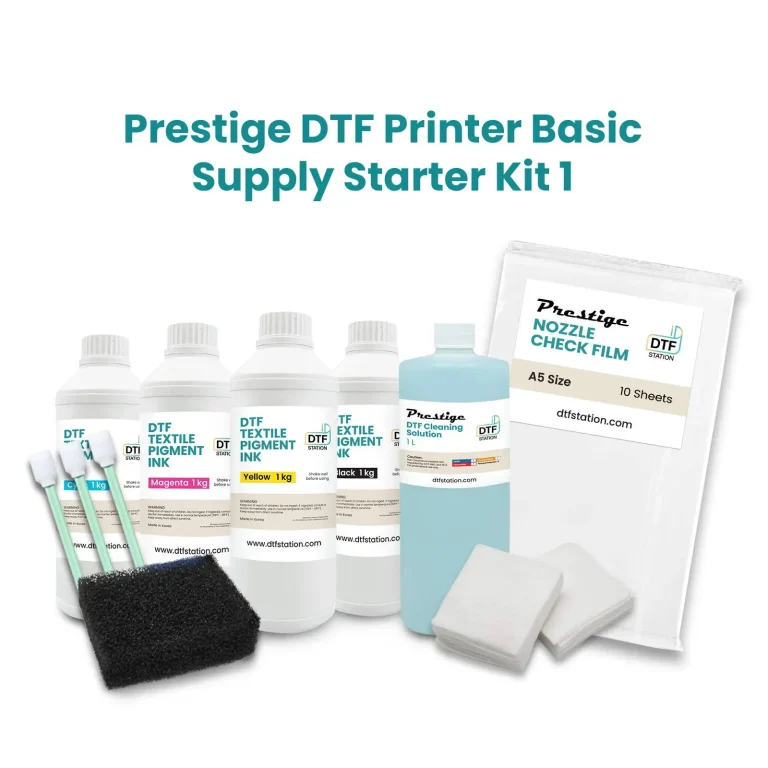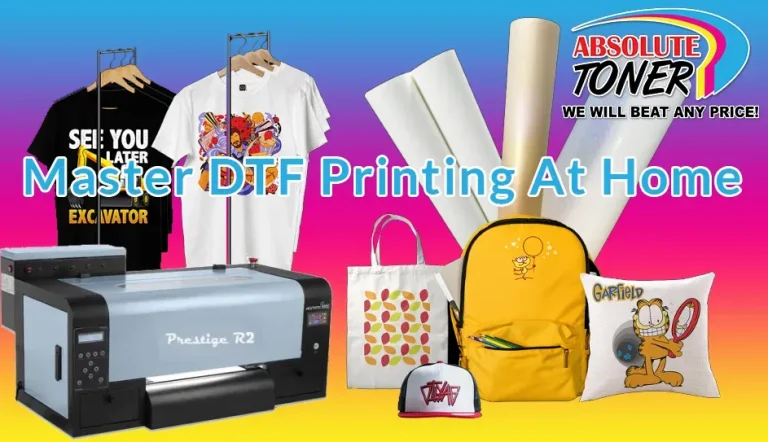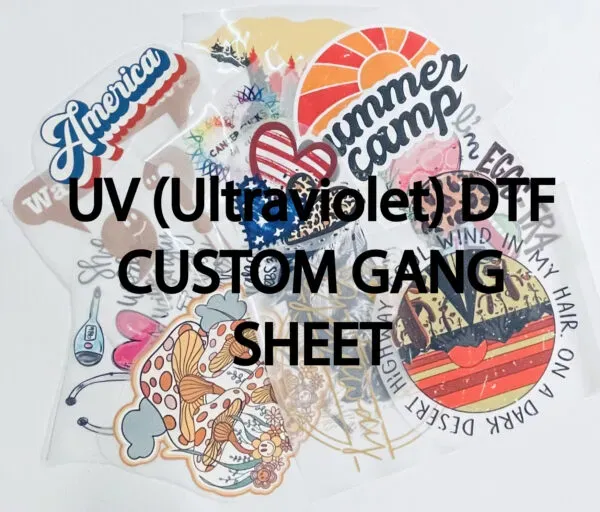DTF Technology: Transforming Custom Apparel Design Today
DTF technology, or Direct-to-Film printing, is revolutionizing the landscape of custom apparel design by providing an efficient and cost-effective solution for businesses. Unlike traditional methods such as screen printing, DTF technology allows for high-quality prints on a variety of fabrics, making it an ideal choice for designers looking to bring unique ideas to life. With innovations like gang sheets, this technique enhances printing efficiency while minimizing material waste, promoting sustainability. Platforms like EazyDTF and DTFPrinter.com have emerged to support this exciting shift, catering to both small businesses and individual entrepreneurs. As DTF technology gains momentum, it opens up endless possibilities for personalized apparel and creative expression.
Revolutionizing how custom clothing is created, Direct-to-Film printing is quickly becoming a preferred method among apparel designers and businesses alike. This innovative process allows prints to be applied directly to garments from a film, making it distinct from traditional techniques. With the growing popularity of DTF technology, many are discovering alternatives such as film-based printing methods, which promise high-quality output and versatility. The introduction of services like EazyDTF emphasizes the increasing accessibility of these printing solutions for creators and small brands. As the market continues to adapt, custom apparel design is poised for a dynamic transformation powered by DTF solutions.
Understanding DTF Technology in Custom Apparel Design
DTF (Direct-to-Film) technology has emerged as a game-changer in the realm of custom apparel design. Unlike traditional printing methods, DTF operates on the principle of transferring designs directly from a film to fabric using heat and pressure. This technique not only provides superior print quality but also maintains the vibrancy of colors, allowing for intricate designs that truly pop. Since its introduction, DTF technology has garnered widespread attention for its ability to produce high-resolution graphics on various fabric types, including cotton and polyester blends. This versatility ensures that businesses can meet diverse customer needs without compromising on quality.
The adoption of DTF technology streamlines the entire design process, making it more efficient and accessible for brands of all sizes. Due to its cost-effectiveness, small businesses are now able to compete on a larger scale without significant financial hindrance. Furthermore, DTF printing allows for rapid prototyping, enabling designers to bring their concepts to life in record time. This not only fosters creativity but also offers a dynamic response to market trends, allowing businesses to innovate and appeal to a broader audience.
Advantages of DTF Printing for Custom Apparel Businesses
The benefits of adopting DTF printing in custom apparel design are manifold. One of the primary advantages is its *cost-effectiveness*. DTF technology eliminates the expensive setup and screen costs associated with traditional screen printing methods. Instead, businesses can rely on advanced DTF printers to produce high-quality prints at a fraction of the cost, making it an attractive option for startups and small enterprises looking to maximize their profit margins. Additionally, the ability to print in full color and include intricate details opens up a world of possibilities for customization, allowing brands to cater to very specific customer preferences.
Moreover, DTF technology enhances operational efficiency through the innovative use of *gang sheets*. By printing multiple designs on a single sheet, businesses significantly reduce material waste while increasing productivity. This not only maximizes ink usage but also accelerates the turnaround time for orders, enabling businesses to fulfill customer requests more swiftly. Such efficiencies contribute positively to the overall customer experience, as faster delivery times often result in higher customer satisfaction rates.
Maximizing Efficiency with Gang Sheets in DTF Printing
The introduction of gang sheets is one of the most significant advancements within DTF technology. By allowing multiple designs to be printed on a single sheet, gang sheets optimize the printing process, drastically reducing production time and material wastage. This method fits seamlessly with the operational needs of both small and large custom apparel businesses, making it a preferred choice among manufacturers. As a result, businesses can efficiently manage larger volumes of orders without the typical bottlenecks seen with traditional methods, enabling them to scale operations quickly.
Furthermore, implementing gang sheets means that designers can harness the full potential of DTF printing without the pressure of high upfront costs traditionally associated with screen printing. This flexibility allows apparel creators to experiment more freely with their designs and push the limits of creativity, resulting in unique offerings that stand out in a competitive market. In turn, consumers benefit from a wider variety of products, contributing to a vibrant and dynamic custom apparel landscape.
The Impact of EazyDTF on DTF Technology Adoption
EazyDTF has made significant strides in DTF technology by investing in large-format printers, which greatly enhance production capabilities. This commitment to expanding printing services has set a benchmark in the industry, allowing businesses to offer same-day shipping for DTF transfers. With such rapid delivery options, EazyDTF is at the forefront of meeting the demands of a fast-paced market where consumers expect immediacy in custom apparel orders. Such advancements not only position EazyDTF as a leader in DTF technology but also shift the expectations for all players within the custom apparel sphere.
The ability to access high-quality DTF transfers from EazyDTF paves the way for small businesses and individuals to break into the custom printing market without needing substantial capital investments for equipment. This democratization of technology fosters innovation and entrepreneurship in the apparel industry, as creators can now easily bring their unique visions to life and cater to a broader clientele. As EazyDTF continues to simplify the transfer process, its influence may inspire more businesses to adopt DTF technology, driving further growth in the custom apparel sector.
Innovations in DTF Printing: A Look at DTFPrinter.com
The launch of DTFPrinter.com marks a pivotal moment for both crafters and professional creators in the custom apparel design space. This innovative platform aims to streamline the DTF transfer process, allowing users to easily navigate from design to print. By offering high-quality transfers and user-friendly tools, DTFPrinter.com simplifies what can often be a complicated process for newcomers. This accessibility encourages more individuals to engage in custom apparel creation, ultimately broadening the scope of the market.
Additionally, DTFPrinter.com serves as a valuable resource for businesses of all sizes. With its commitment to providing reliable DTF printing services, the platform allows creators to focus on their designs without the stress of managing equipment or production logistics. This model also emphasizes the growing trend of online services that cater to the evolving needs of apparel entrepreneurs, ensuring they have the support necessary to succeed in a competitive niche.
Challenges in Implementing DTF Technology Effectively
Despite the numerous advantages of DTF printing, challenges remain that businesses must navigate to leverage this technology effectively. One critical hurdle is ensuring quality control throughout the printing process. With DTF technology producing vivid colors and intricate designs, maintaining high standards becomes paramount; businesses must invest in reliable DTF printers and implement stringent quality checks to guarantee customer satisfaction. As the old adage goes, “You only get one chance to make a first impression,” and the quality of a printed product can substantially influence buyer perceptions.
Moreover, businesses new to DTF printing may face a learning curve that requires proper training and skill development for their workforce. Understanding the nuances of DTF technology—from ink types to printer calibration—can be daunting for those unfamiliar with the process. Therefore, companies need to prioritize training and provide ongoing support to ensure employees can effectively utilize DTF technology, minimizing errors and optimizing production timelines.
Frequently Asked Questions
What are the benefits of using DTF technology for custom apparel design?
DTF technology offers several benefits for custom apparel design, including cost-effectiveness, versatility in fabric types, and quicker turnaround times. It allows businesses to produce high-quality prints economically, accommodating a range of designs from vibrant colors to intricate details.
How do gang sheets improve the efficiency of DTF printing?
Gang sheets are a key feature in DTF printing that enables multiple designs to be printed on a single film sheet. This process not only streamlines the printing operation by saving time but also reduces material waste, making DTF technology a more sustainable choice for custom apparel production.
Can I use DTF printing on various types of fabric?
Yes, DTF printing is highly versatile and can be applied to numerous fabric types including cotton, polyester, and blends. This adaptability makes it ideal for producing diverse custom apparel designs to meet varying customer needs.
What is EazyDTF, and how does it benefit custom apparel businesses?
EazyDTF is a company that specializes in DTF printing technology. With significant investments in large-format DTF printers, EazyDTF offers nationwide same-day shipping for DTF transfers, helping businesses streamline their production and meet customer demands quickly.
How can DTFPrinter.com help small businesses in custom apparel design?
DTFPrinter.com simplifies the custom transfer printing process for crafters and small business owners by providing high-quality DTF transfer options and tools that streamline design-to-print workflows. This accessibility empowers entrepreneurs to produce stunning apparel designs without production hassles.
What challenges might businesses face when adopting DTF technology?
While DTF technology offers many advantages, businesses may encounter challenges such as ensuring quality control, needing specialized training for staff, and navigating increasing competition in the custom apparel market. Addressing these challenges is crucial for successful implementation.
| Key Points of DTF Technology | ||
|---|---|---|
| Definition | Advantages | Recent Developments |
| DTF (Direct-to-Film) technology involves printing designs on a special film and transferring them to fabric using heat and pressure. | 1. Cost-Effectiveness: Lower production costs compared to traditional methods. 2. Versatility: Works on various fabrics (cotton, polyester). 3. Efficiency: Utilizes gang sheets to print multiple designs simultaneously, reducing waste. |
1. EazyDTF’s investment in large-format printers for efficient nationwide service. 2. Launch of DTFPrinter.com for easier printing for creators. 3. xTool’s new affordable apparel printer with advanced features for small businesses. |
| Impact on the Market | ||
| 1. Boosts small businesses by lowering entry costs and allowing for unique offerings. 2. Expands consumer choices with more custom apparel options. |
3. Fosters creativity due to reduced production costs and time. | 4. Challenges such as quality control, employee training, and competition management. |
Summary
DTF technology is reshaping the custom apparel design industry by introducing innovative processes that enhance quality, efficiency, and versatility. This printing method empowers businesses, enabling them to produce high-quality custom garments at lower costs, making it a game-changer for small enterprises and individual designers. As the market adapts to DTF technology, the future looks bright with expanded possibilities for creative expression and consumer choice, ensuring that personalized apparel becomes increasingly accessible.





